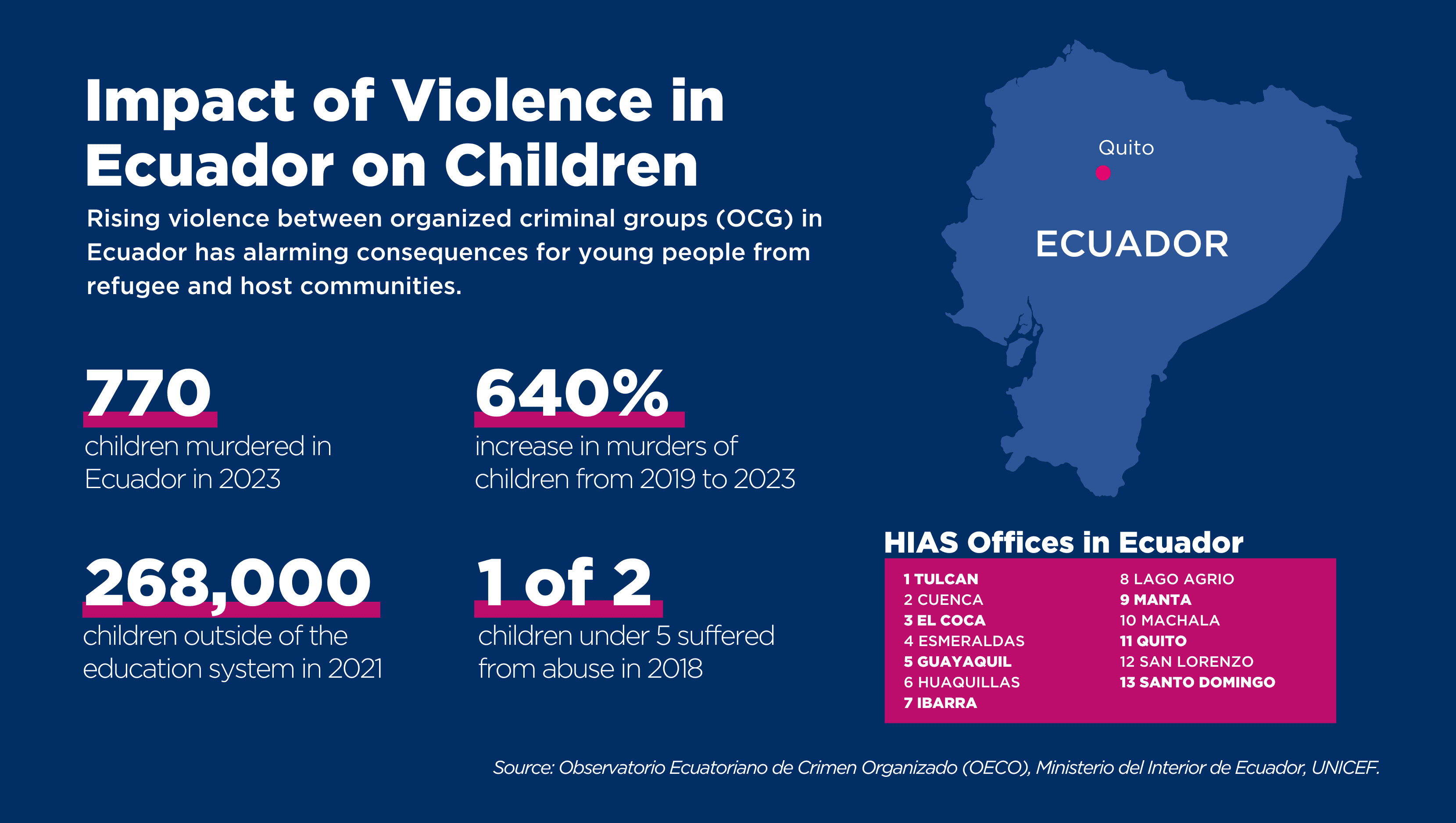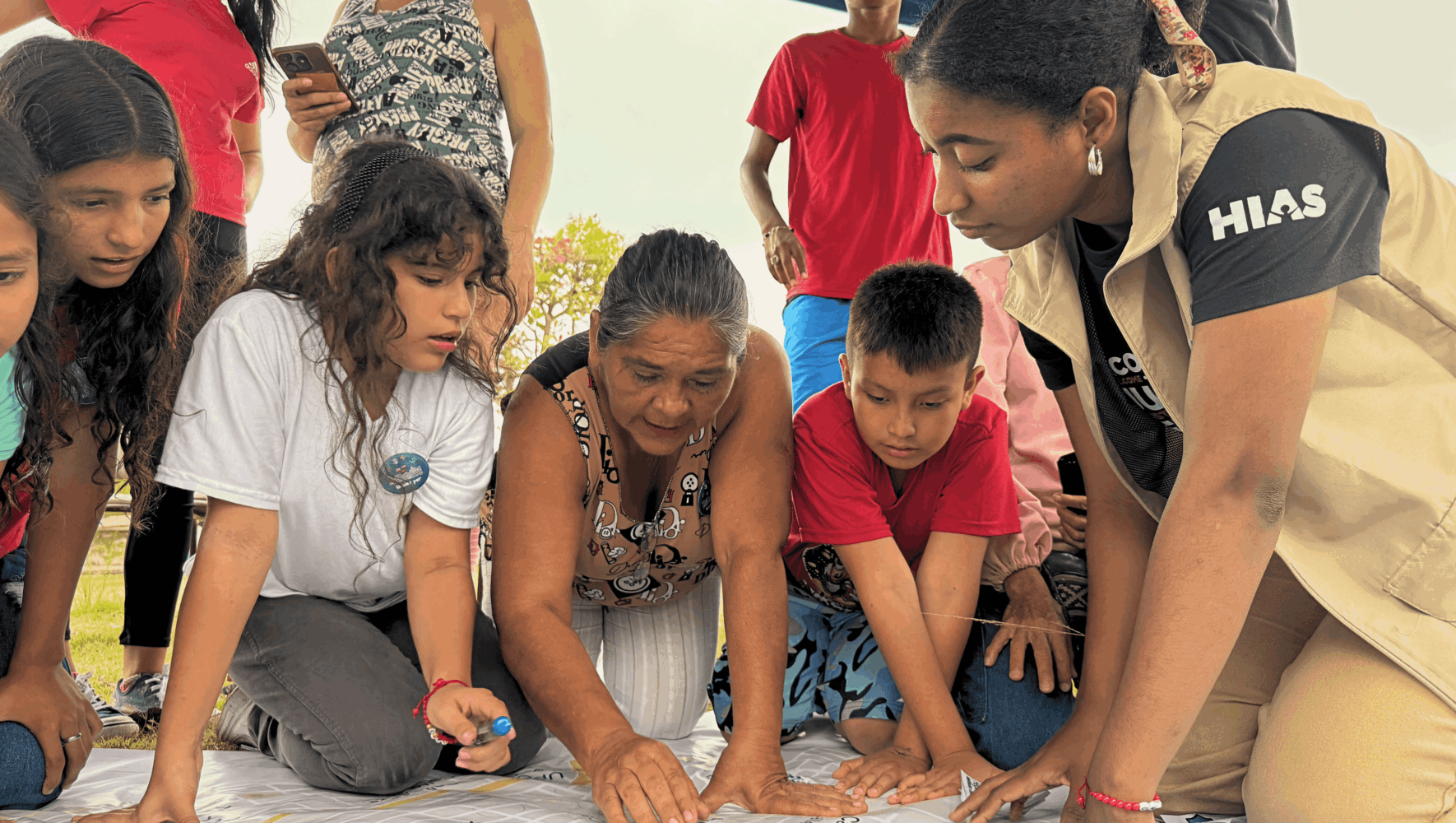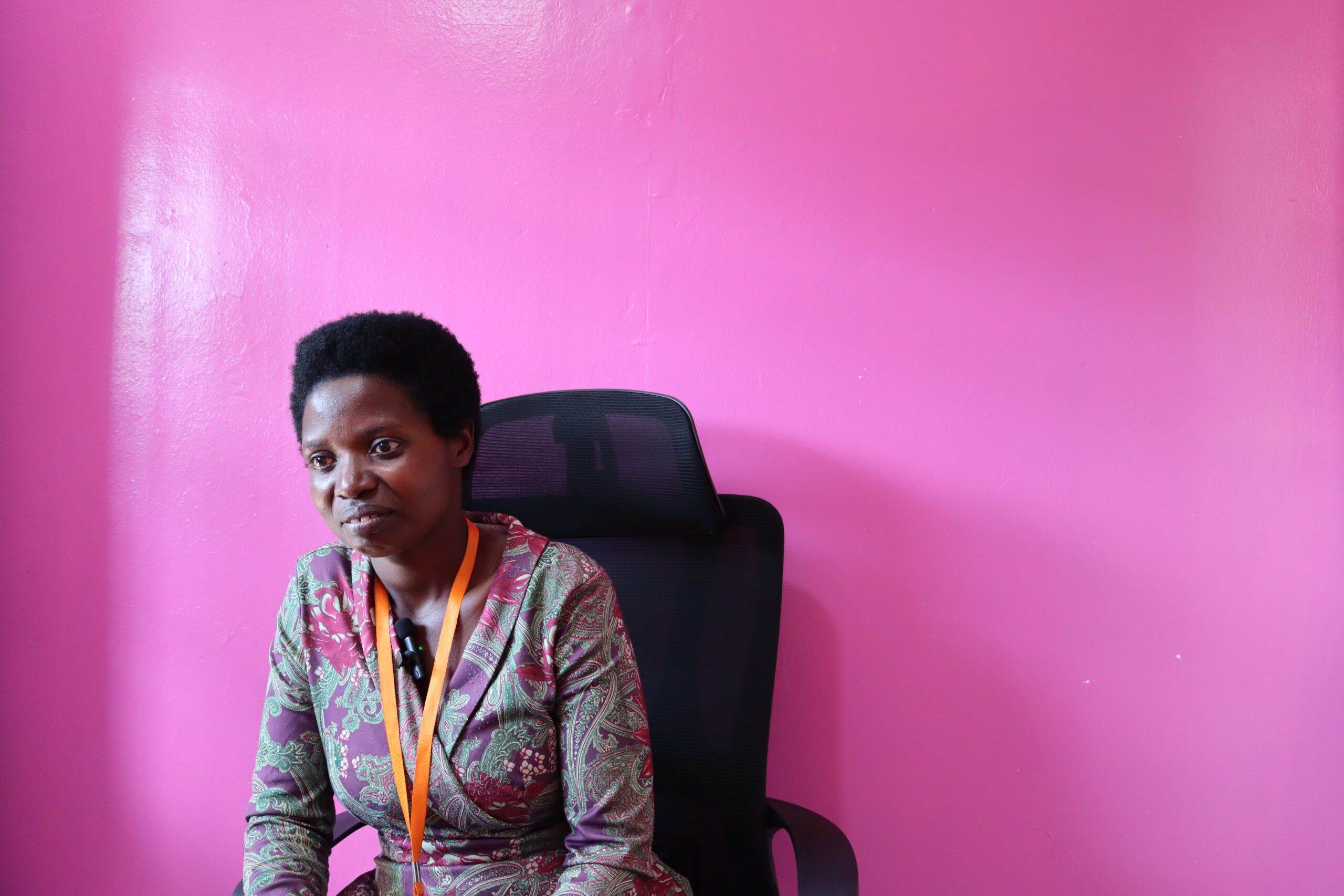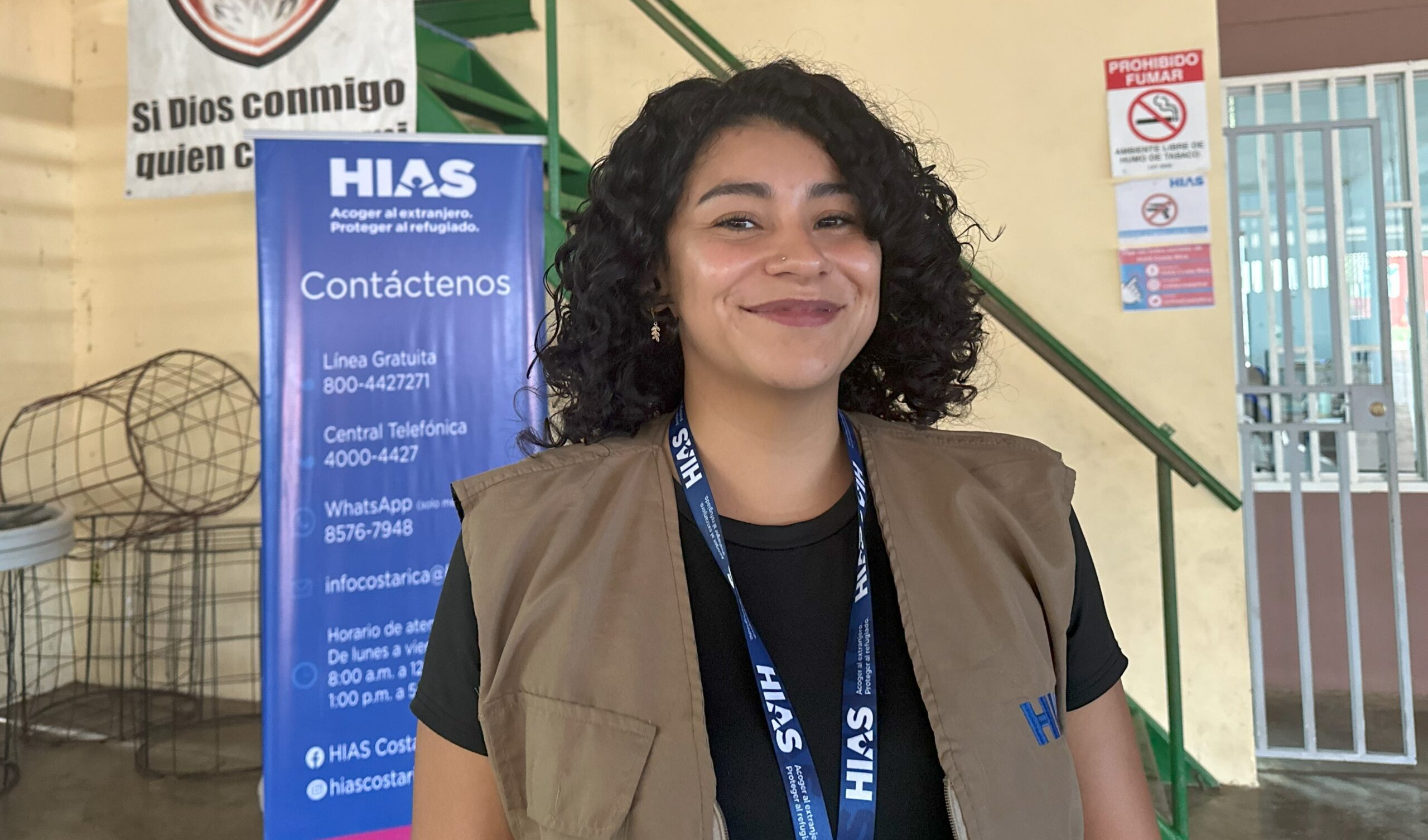Throughout 2023, two children were murdered each day in Ecuador, mostly during confrontations between organized criminal groups (OCG). Many of them were under four years old.
Clashes between OCGs and a significant rise in violent crime such as homicides and kidnappings have caused internal displacement and have led many to seek safety abroad. Although violence has impacted everyone, children have been disproportionately affected.
Many OCGs battle for control of territories in residential areas of Ecuador, where stray bullets have claimed many victims under the age of 19. However, other children are forcibly recruited by armed groups in order to participate in criminal activities. Currently, six out of 10 members of Ecuadorian OCGs are under the age of 19.
HIAS Ecuador has been implementing child protection programs since 2016 — however, this work is now more relevant than ever given how many children are at-risk of violent attack or recruitment. HIAS works with children, adolescents, parents and caregivers in impacted regions of the country to implement community-based protection (CBP) strategies that lower risks of violence. Through different programs, HIAS fosters peace, inclusion, dialogue, and creativity within communities, in spaces where children’s rights are respected.

Infographic by Beverly Goldberg.
“In Esmeraldas, the security situation is very complicated right now,” said Karla Rosero, social worker for HIAS Ecuador.
“That’s why we’ve created safe spaces where children, their parents, and caregivers can participate in activities without fear that something might happen to them.”
HIAS Ecuador is currently supporting children in provinces such as Esmeraldas, Manta, Guayaquil, and Huaquillas, which have been among the hardest hit by violence.
Fostering Safer Futures for Ecuador’s Children
Across the country, HIAS Ecuador carries out case management of unaccompanied children, children separated from their carers, or children at high risk of violence, in order to refer them to local protection systems across the country.
In addition, HIAS implements an Adolescent Autonomy Program that provides teenagers with tools to plan stable futures free from violence. These tools strengthen their psychological resilience, help them understand the root causes of violence in their homes and communities, and create plans for adulthood.
“This can make a huge difference in the lives of teenagers who could otherwise fall into a never-ending cycle of violence,” said Carolina Guzman Vasquez, child protection coordinator for HIAS Ecuador.
Children from the ages of three to 18 also receive support through the UNICEF-created Child-Friendly Spaces and Integral Support Spaces initiatives. Child-Friendly Spaces are focused on protection services for separated and at-risk children, and Integral Support Spaces facilitates community cohesion through different activities.
“I feel really happy here because it’s a very peaceful place”Samuel Ramírez*, participant of the Integral Support Space in Esmeraldas
Improving community cohesion has been demonstrated to reduce violence, increase trust, and build cooperation in areas impacted by conflict.
Samuel Ramirez* is 13 years old and arrived in Ecuador with his parents four years ago. He participates in different activities in the Integral Support Space of Esmeraldas.
“I’ve been doing painting and photography courses here. We also learned about transforming traditional gender roles, and in one of these classes we cooked together” Ramirez said. “I feel really happy here because it’s a very peaceful place.”
For children like Samuel, the Child-Friendly Spaces and Integral Support Spaces provide them with a new environment where they can safely learn and interact with others outside their homes. This is fundamental in a context where playing outside or in community centers feels impossible due to security concerns.
“Violence breaks down social fabrics and a sense of community and seriously impacts families. At HIAS, we provide spaces where children and their families can heal,” said Rosero.
Our child protection programs in Ecuador have supported 84,231 children and their caregivers since they began in 2017. Programs are implemented with the support of partner organizations such us UNICEF, UNHCR, and the Government of the United States.






